Angry about Anger: the Wood Element
Peeved. Irritated. Annoyed. Impatient. Frustrated. Resentful. Indignant. Enraged. Aghast. Livid. Furious. Is anger always a “bad” emotion? Chinese Five Element acupuncture sees anger as the emotional aspect of the Wood Element, encompassing both constructive and destructive power. Anger is part of our nature as human beings, rooted in instinct. Like all instinctive emotions, it exists for a reason.
Anger gets a bad rap in Western culture. It is a spectacular emotion with enormous destructive power. Fearing its power, we seek to control it with “anger management.” Paradoxically, it bursts forth in great abundance in our workplaces, families and nations. What we resist persists. We even get angry about our anger! In resisting anger, we overlook its constructive power.
Five Element theory gives us a holistic viewpoint that can guide us to a fuller understanding of anger. Rather than resisting anger, we can embrace it as part of human nature.
Anger: the Wood Element and Spring
In Five Element acupuncture theory, the Wood Element is associated with the season of Spring. If we consider the activities that life takes on in Spring, we can understand why the Chinese connect anger with the Wood Element.
Plant and animal life have vigorous, purposeful energy in Spring. Seeds burst forth from their pods and push up from under the earth. Trees bud, flower and leaf out. Insects emerge from cocoons. Lambs and calves are born. The movement of energy is upward, outward and bursting forth. Spring is a time of new beginnings and hope.
Anger, in its constructive power, is the emotional manifestation of this energetic movement. It is the force that breaks through obstacles. It is vigorous and noisy, assertive and impetuous. Its power can be intimidating, but yet vital to birth and growth. Anger has been called a “kind of violence proper to all beginnings.”
Anger: the Wood Element and Injustice
Western culture, rejecting anger, sees it as abusive. Ironically, the one who is shouting in anger may be the victim not the abuser. Anger is the emotion of injustice. The spirit of the Wood Element evokes benevolence and concern for justice.
The Chinese word nu , which we translate as anger, has a more nuanced meaning than the English equivalent. We can see this by considering the form of the Chinese ideogram below:
怒
Nu consists of three sub-components. In the upper left is the character for “woman” 女. In the upper right is a stylized pictograph of a raised hand 又. Together, these two components form the word for “female slave” 奴. The third component, beneath these two, is the character for “heart” 心. The three together signify “the feelings of a female slave under the hand of a master.”
The ideogram nu gives us the primal image of a disempowered, abused and victimized person. A female slave is the lowest of beings on the social hierarchy. Her anger is appropriate and just.
Nu shows us that anger is a coin with two sides. Suppressed anger is as much a part of the emotional spectrum as rage or fury. A female slave is unlikely to express hostility openly. More likely, her anger will come out as frustration and resentment.
Moreover, nu illustrates the connection of anger with benevolence and injustice. Human trafficking and slavery continues in the world to this day. Think of the many vulnerable girls who are sold into the sex trade. It stimulates not only our benevolent compassion, but also our anger against injustice.
Anger: the Wood Element in and out of Balance
A healthy Wood Element gives us the ability to express anger through effective personal qualities of assertiveness, planning, judgement, and direction. This is the energy of the warrior, the competitive athlete and the successful entrepreneur. Forceful and exuberant, yet clear and purposeful.
If Wood is damaged, anger may appear inappropriately. On the one hand, anger may spill out of control. SunZi’s Art of War (a 5th century BCE manual on strategy) describes excessive anger:
“Try to anger the enemy army’s general in order to scatter his mind. Then he will be unable to see the situation clearly, and will conceive erratic plans and his army will be defeated.”
On the other hand, anger may be completely lacking when needed. The person appears apathetic, defeated and hopeless. Resigned and depressed, she seems incapable of rousing anger in any situation.
Wood energy gives us the spurt of life we need to be born into the world. New life must be nourished in order to grow. Five Element acupuncture treatment can help nourish the Wood Element and restore balance to body, mind and spirit. Accessing our inner resources, we can balance anger and express ourselves purposefully in the world.
Inner Works Acupuncture is a Five Element acupuncture clinic in Portland, Oregon. Contact us today at 503-227-2127 to schedule an appointment.
References:
Claude Larre and Elisabeth Rochat de la Vallée, The Seven Emotions, Monkey Press, 1996.



